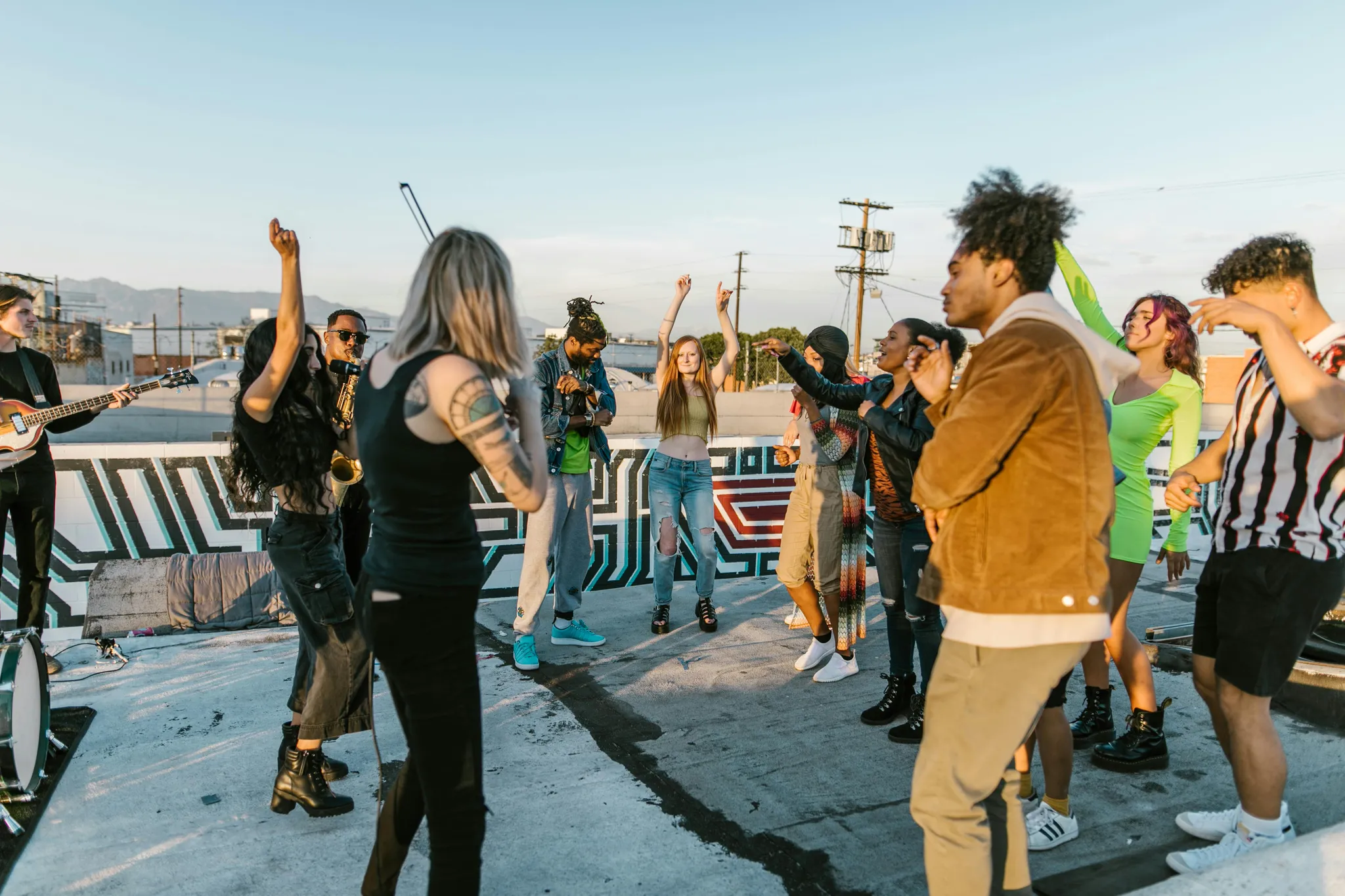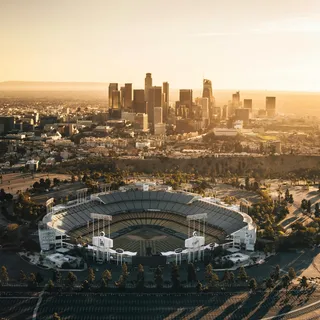
How to Deal with the LA Flake: Attracting Event Attendees in Los Angeles
You’ve curated the perfect LA event—stellar venue, Instagram-worthy decor, A-List influencers—but half the guest list ghosts. Welcome to the LA flake phenomenon.
Having attendees RSVP and then never show up is always disappointing, especially when you think about the blood, sweat and tears that go into creating an event. For planners, this can be a devastating blow to their ego, but rest assured—it’s not you, it’s them.
In this blog post, we’ll share six tips to combat wishy-washy event attendance and some secret sauce you can use to get full attendance and create FOMO for the next one.

Why are Angelenos so flaky?
To answer this question, we have to first look at LA's setup. As they say, “it takes an hour to go anywhere in LA,” and that’s just the beginning. Next comes the amount of events that happen at any given time, on any given day, and the overcommitment of social engagements. Burnout can—and does—happen quickly. The sheer volume of events and the physical and emotional work it takes to attend them is overwhelming. Brands who want to host events are up against a lot. However, with the right strategy, your event doesn’t have to be “just another LA event.”
Six steps to turn ghosts into event-goers
If you are going to plan an event in LA, you’re going to need some ghosting mitigation strategies. At EMB, clients turn to us all the time to elevate their events because their last few didn’t yield the results they were hoping for. We’re pretty good at this type of thing, so we’re passing our expertise on to you.
Step one: craft an irresistible event narrative
What is your theme? Where is your event located? And most importantly, who are you speaking to? If you haven’t answered these basic questions, you need to head back to the drawing board. Just because you think something is cool, doesn’t mean it will resonate with them. So to curate the perfect event, survey your target audience. Don’t assume your event is “one you don’t want to miss.” Make damn sure.
After you survey your audience, decide your narrative with an immersive concept. At the end of the day, events are an experience, so if you over-promise and under-deliver, you might as well hang up your hat, because one of the most unforgivable things in events is wasted time. Take the Willy Wonka experience in Glasgow, or—better yet—Fyre Festival. (I don’t think Billy is ever going to live that down.)
TL:DR
- Survey your audience.
- Ensure events with exclusive benefits actually have benefits worth the exclusivity.
- Be as accurate and on-point as possible in your theme, especially for throwback events.
Step two: leverage FOMO tactically
So, you have your theme, your venue and audience interest, and now you’re ready to start selling tickets. But first, you need to create excitement. Do this by sharing behind-the-scenes (BTS) content on social platforms where the audience lives. If this is the first event, share the setup process and leverage videography for announcement clips. And finally, people get excited when there’s a deal to be had. So, highlight early-bird pricing in a limited capacity and offer incentives for early purchases.
For example, if your event is a ‘90s rooftop party, then an added value would be signed merch for the first 25 people and a t-shirt for the next 75 people. Gift cards, sunglasses, flasks, etc. are all things people covet, so when you survey your audience, find out what they value the most. (A mood ring or a Tamagotchi giveaway or an opportunity to take group selfies in a recreated Friends set would be “da bomb.”)
TL:DR
- People like freebies, but people love really unique freebies that are event-specific.
- The event experience starts weeks before the venue doors ever open.
- Highlight pricing deals, leverage BTS content, and offer incentives to build FOMO.
Step three: simplify the commitment process
The registration process is where the audience gets their first impression of the event, and if I know one thing about Angelenos, they are impatient AF. Glitches happen, but planning ahead and looking at every detail for registration is the difference that can make or break morale. So, leverage tools like Eventbrite’s one-click registration, and allow attendees to auto-add events to their Google or Apple calendars. You should also send reminders ahead of the event one to two months out, one week out, 48 hours before and finally two hours before the event starts. For an extra razzle-dazzle, send a survey after the event to build FOMO for the next one and to understand what did and did not work for the audience.
In LA, you also have to contend with the issue of access and transportation. Even the most theoretically committed ticket-holder might flake at the last minute if they have to take the 5 to get to your event at 7:00pm on a Friday. Part of simplifying the commitment process is making sure your attendees stick to their commitment up until the moment they need to leave their apartment. Encourage—or even incentivize—rideshares, and choose venues and event start times that make it easier to say “yes.”
TL:DR
- Make registration as easy as possible.
- Don’t let your audience forget that they registered, and encourage commitment.
- Think about physical access and transportation to avoid last-minute flakers.

Step four: build pre-event hype and community
Events are about building community through shared experience. Planners bring together people with similar interests and different backgrounds to cultivate relationships. But it doesn’t happen out of thin air. Community-building starts by creating a digital presence. Besides daily polls and trivia on social media, Discord servers that are made for specific communities are top-tier. If your audience had 8-track players in their youth, then perhaps a Facebook group is more appropriate to generate engagement. Even Instagram broadcast channels can drum up engagement well before the event is set to take place. So again—and I’m saying this for the people in the back— know your audience.
Another great way is to partner with local brands and event vendors for cross-promotion. By all means, if you want to go the event journey alone, do it, but events are for community, and what better way to create community than to build a mutually beneficial partnership.
TL:DR
- Set up social media groups and channels to facilitate attendee connections.
- Publish daily content like stories,polls and trivia for audience engagement.
- Partner with non-competitive local brands for cross-promotion.
Step five: offer value beyond the event
We talked a little about this earlier, but this section dives deeper into the “value beyond the value.” If you want to plan an event that has long-lasting impact but you’re only focusing on the before and during, then you’re missing the bigger picture. Consider for a second that 1 billion people drink coffee daily. Now, think back to the last time you went to an event that gave away coffee as swag. I’ll wait… because your answer might be “never.” Coffee has the power to unite us in a shared experience, but it’s rarely leveraged at events. Listen, events need swag, and they shouldn’t be random; thoughtfulness and connection to theme are key. You get bonus points for giving away swag from local small businesses in LA because your attendees will possibly remember you at those establishments later—and talk about you.
The next event always starts at the current event.
Another way to provide value is to create areas within the event for meaningful connections. No matter how much we deny it, people need people. At their core, humans are social creatures. Interaction is what makes us feel whole. So, including designated areas where people can build their communities is a great addition to any event.
Lastly, share recap videos and promo codes for the next one. The next event always starts at the current event. If your event was successful, wouldn’t you want everyone to know? #PostIt
TL:DR
- Curate goodies and swag from local businesses like Dodgers gear or Good Vibes cookies.
- Facilitate meaningful connections with intentional engagement activities.
- Post recap videos and share promo codes for future events.
Step six: learn from the flakes
We’re down to the final step (I know, it’s sad), but this is by far the most important one: when you know better, do better. Dealing with no-shows at an event can be devastating, especially when you were expecting a different outcome, but it can be a great way to assess the flakiness. This is the part where “we listen and we don’t judge” comes into play. One way to do this is to ask for feedback. Instead of writing off the flakes, ask them what you could do better to earn their attendance. When they submit a response, enter them into a raffle to win a prize—or, better yet, a free drink or swag at the next event.
The next step is to constantly track your data so that trends are spotted early on. You may even turn some maybes into definite yeses. And finally, test different formats. Does your audience prefer a digital option? Do they want pop-up events as opposed to all-day or weekend events? Did you pick the right location? What about traffic patterns? Tracking every detail could be the difference between having full attendance or having five people showing up. Data is key.
TL:DR
- Get feedback from the no-shows and incentivize them for the next event.
- Track data to spot the trends so you can get ahead of them.
- Test and iterate through your planning and messaging.
Embrace the LA hustle
![]() There are 99 unknowns, but attendees don’t have to be one. Although Angelenos are about as predictable as The Big One, flakiness is manageable with a little creativity and a lot of persistence.
There are 99 unknowns, but attendees don’t have to be one. Although Angelenos are about as predictable as The Big One, flakiness is manageable with a little creativity and a lot of persistence.
Ready to outsmart the LA flake? Let our event marketing experts guide you from step one to six and beyond, and we’ll even throw in some fairy dust along the way.
Sheria James,
Account Director
If you found this blog post insightful, you're going to love all of our others!











